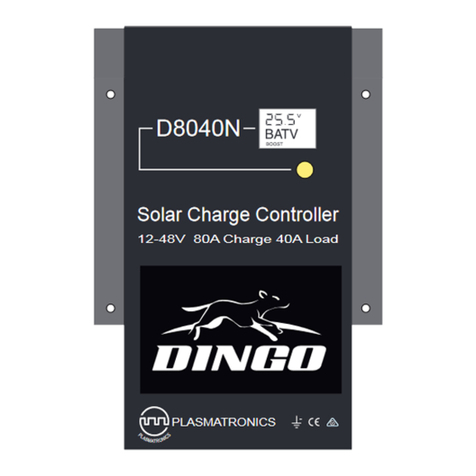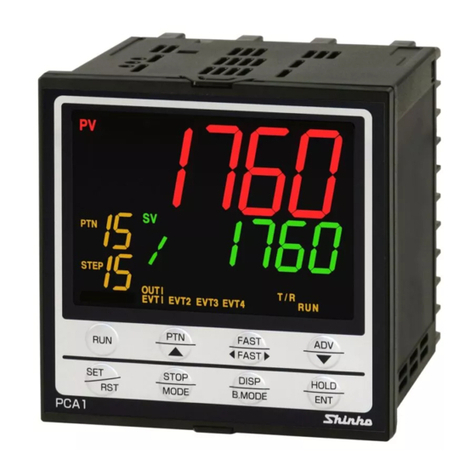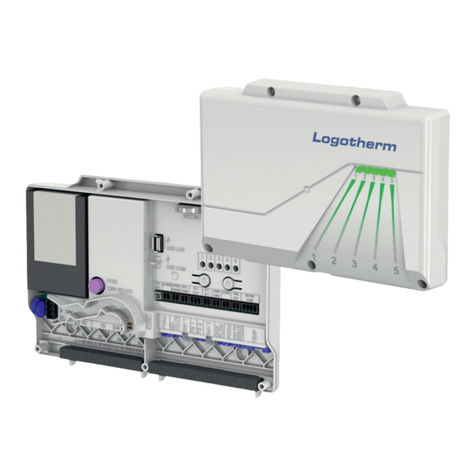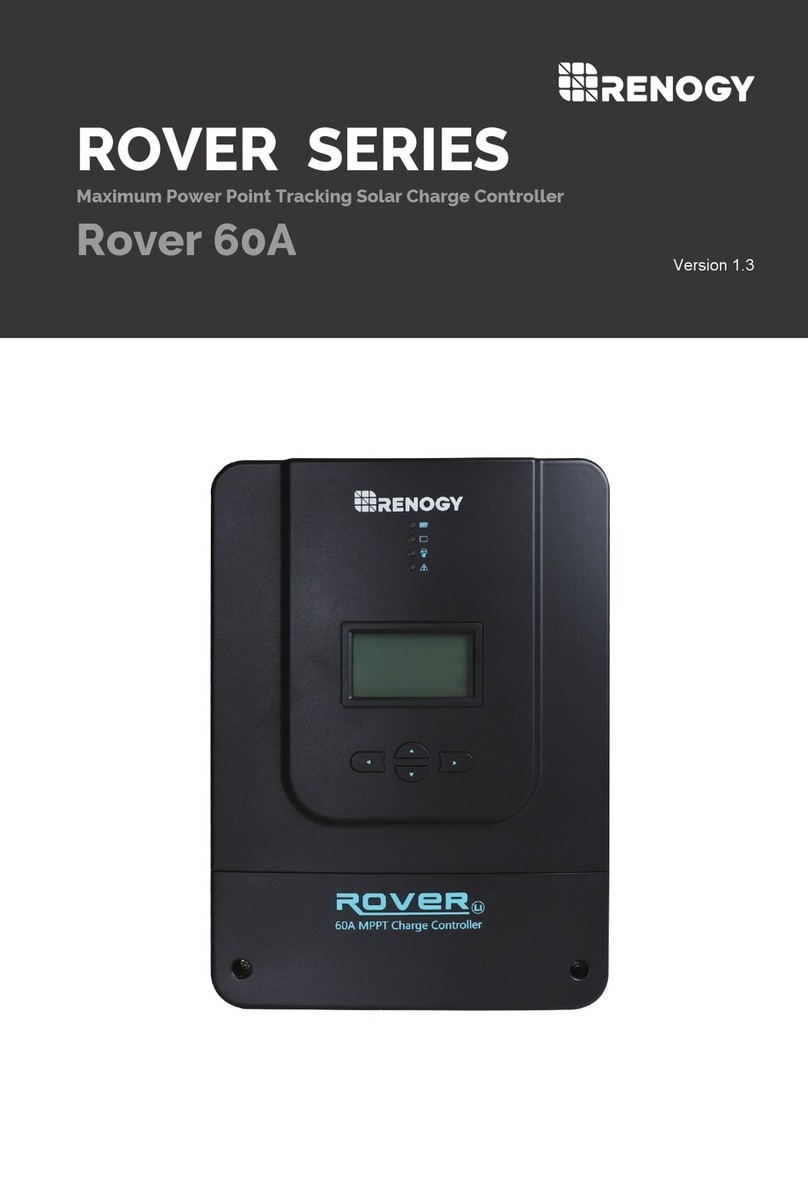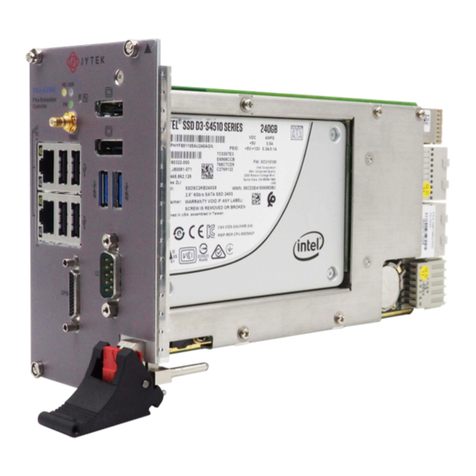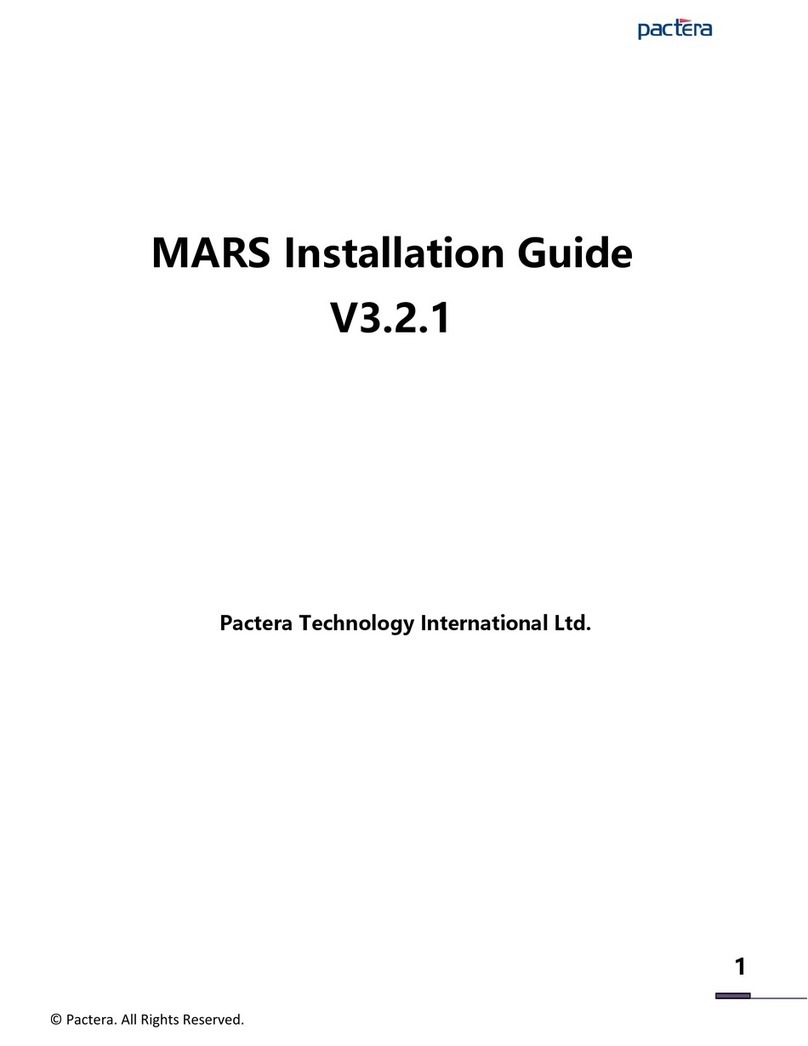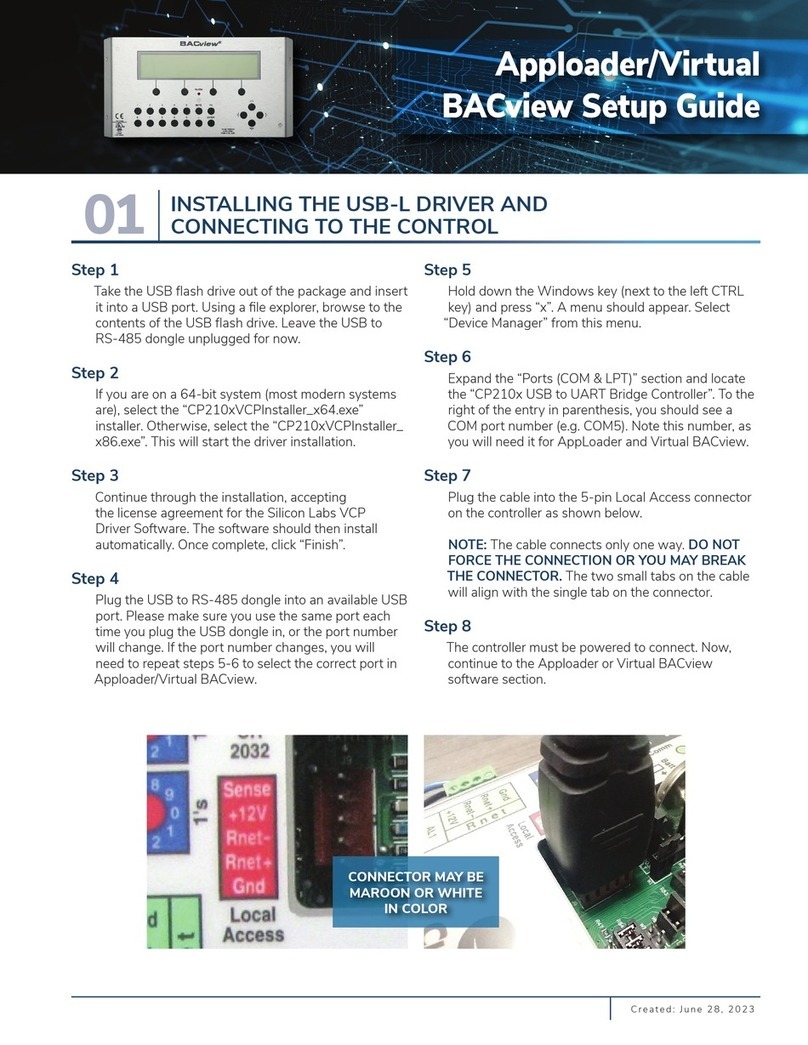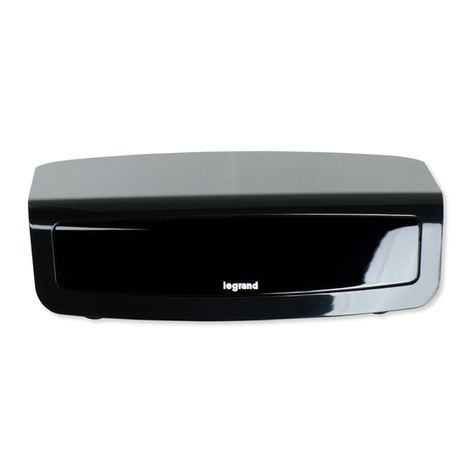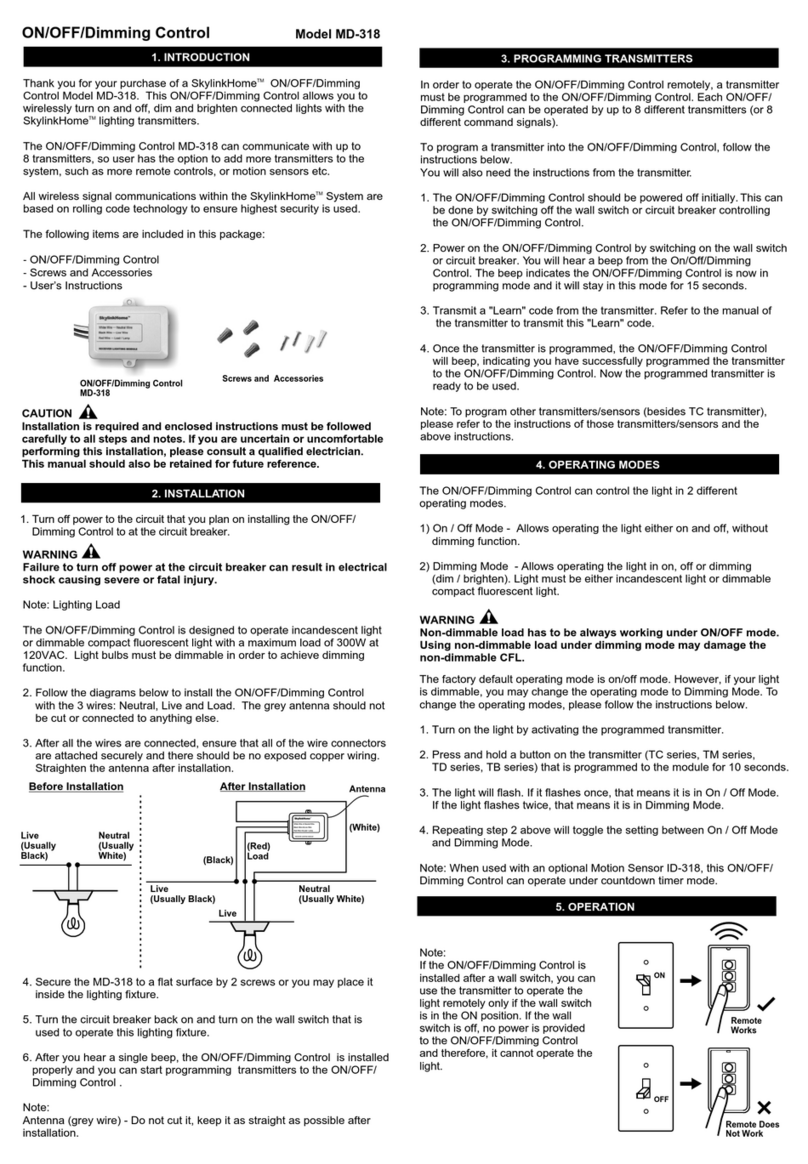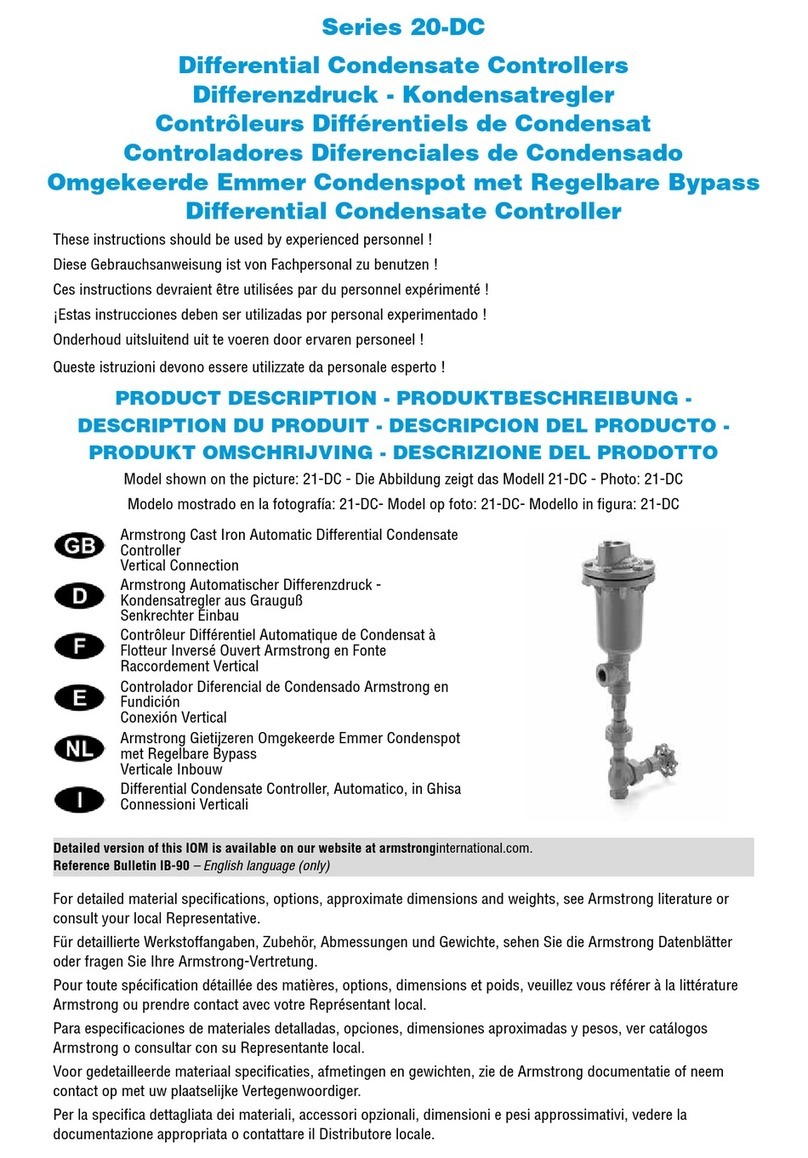impro technologies ISC960-1-0-GB-XX User manual

MODEL NUMBER:
ISC960-1-0-GB-XX ISC962-1-0-GB-XX
IPS960-1-0-GB-XX IPS961-1-0-GB-XX
IPS962-1-0-GB-XX IPS963-1-0-GB-XX
GSM900-0-6-GB-XX
XEA901-1-0-GB-XX
XEA902-1-0-GB-XX
xea
IXP220 CONTROLLER
ImproX IXP220 Controller
INSTALLATION MANUAL
SPECIFICATIONS
Working Environment
Open Frame Construction ..........
(ISC96X)
Designed to work in an indoor (dry)
environment. The Controller is NOT sealed
against water.
Power Supply Combo (IPS96X)..
Designed to work in an indoor (dry)
environment similar to IP20. The Power
Supply Combo is NOT sealed against water.
Power
Open Frame Construction (ISC96X)
Power Input
Main Power Input Port............
18 V DC to 32 V DC or 16 V AC to 24 V AC.
Battery Input Port...................
12 V DC to 14 V DC.
Typical Current Distribution
Controller
Current (mA)
Power (W)
12 V DC with no
peripherals connected
and relays off..................
90
1.08
24 V DC with no
peripherals connected
and relays off..................
60
1.4
16 V AC with no
peripherals connected
and relays off..................
70
1.1
Battery Charging....................
350 mA Trickle charge at 13.7 V DC
maximum.
External Readers ...................
200 mA continuous at 5 V DC and 12 V DC
maximum per port.
Power Output Port..................
1 A continuous at 12 V DC to 14 V DC.

ISC300-0-0-GB-03
November 2009
Page 2
Power Input Protection ...............
Over-voltage and over-current protection are
provided on the Main Power Input.
NOTE: EMC emissions only apply when using the main Power Input Port.
NOTE: As an alternative to a battery, power the IXP220 using a 12 V DC
uninterrupted power supply connected using the Battery Input.
NOTE: The Power Output Port provides a nominal 12 to 14 V DC at 1 A continuous
current. When using the 12 V Backup Battery, the output provides up to 3 A
briefly to cater for in rush currents into locks and other equipment. When
using the Controller without the 12 V Backup Battery, then any load that
demands more than 3 A from the Power Output Port can cause the IXP220
to protect against overload. The Controller achieves this by indefinitely
entering Total Shutdown Mode. Once the overload is removed, the IXP220
resumes normal operation after a maximum of 3 seconds.
Power Supply Combo (IPS96X)
NOTE: An integrated transformer supplies power to this model IXP220 Controller.
The Typical Current Distribution (page 1) for the Open Frame Construction
applies.
Transformer
Input Voltage..........................
230 V AC (nominal) at 50 Hz to 60 Hz.
Output Voltage.......................
16 V AC.
Output Current .......................
2 A maximum.
The following specifications are common to both the Open Frame Construction and the
Power Supply Combo options.
Battery
Type.......................................
12 V Sealed Lead Acid, 7 Ahr (Max).
Approximate Length...............
151 mm (6 in) (Max).
Approximate Width.................
65 mm (3 in) (Max).
Approximate Height................
99 mm (4 in) (Including the Terminals) (Max).
Charge Voltage......................
13.8 V DC at 350 mA (Max).
Real Time Clock (RTC) Backup
Battery
Battery Type...........................
1 x 3 V, CR2032, Lithium cell Battery.
Battery Life.............................
2 Years with power OFF,
5 years with Power ON,
5 Years Storage with Battery Tab in place.
Controller Communication
USB Port.......................................
USB Device, Type-B, female connector,
12 Mbps, USB V2.0.
Ethernet Port................................
Standard Ethernet RJ45 connector.
10/100 Base T, half or full duplex.

ISC300-0-0-GB-03
November 2009
Page 3
RS232 Port ...................................
9-Way, D-type, female connector or terminal
block connection.
Default Baud Rate..................
38 400.
NOTE: To achieve RS232 connection, use
either the 9-way, D-type, female
connector or the terminal block
connection.
RS485 Controller Port
Electrical Interface..................
RS485.
Default Baud Rate..................
38 400.
Data Format...........................
8 data bits, no parity, 1 stop bit.
Communications Protocol ......
ImproX Secure Communications Protocol.
Line Termination (RS485)......
Provision is made for line termination.
GSM Module
Frequency..............................
850 MHz, 900 MHz, 1800 MHz and 1900 MHz.
Power Consumption
Minimum.........................
0.05 W.
Operating........................
1.5 W.
Peak...............................
7.5 W.
Terminal Communication
RS485 Terminal Port
Electrical Interface..................
RS485.
Baud Rate..............................
38 400.
Data Format...........................
8 data bits, no parity, 1 stop bit.
Communications Protocol ......
ImproX Secure Communications Protocol.
Line Termination (RS485)......
Provision is made for line termination.
Reader Options
Wiegand Ports .............................
2 Fully functional Wiegand Reader Ports.
Power Output.........................
12 V DC and 5 V DC (selectable) at maximum
200 mA.
Modes Supported...................
Tag, Tag + PIN-code, Personal Access Code
or Reason Code Mode except when the
Reader Port is set to Wiegand Open Mode.
Antenna Reader Ports.................
2 Fully functional Antenna Reader Ports.
Relays
Relay Output ................................
2 x Relays, Form C, each with NO, COM and
NC contacts.

ISC300-0-0-GB-03
November 2009
Page 4
Contact Ratings...........................
10 A at 28 V DC,
5 A at 220 V AC,
12 A at 120 V AC.
Operations....................................
100 000 Minimum.
Digital Inputs
Input Types ..................................
4 x Dry Contact Digital Inputs.
Detection Resistance Range ......
< 2 kOhm.
Protection Range.........................
+ 20 V continuous.
Figure 1: End of Line (EOL) Sensing Circuit
NOTE: End of Line (EOL) Sensing enables the Controller to raise an alarm when
somebody tampers with the circuit (that is, cutting or shorting the wires)
between Reader 1 or Reader 2 Input (of DOS [1] or DOS [2]) and GROUND
(GND). In other words the Controller distinguishes between tampering on
the circuit, and the door being in an actual ‘Normally Open’ or ‘Normally
Closed’ state. By placing Resistors into the circuit between the Reader 1
or Reader 2 Input (of DOS [1] or DOS [2]) and GROUND (GND), the
Controller’s Digital Input monitors a constant resistance through the circuit.
When the circuit is tampered with, the Resistors are bypassed; the
Controller detects the resistance change raising an alarm.
NOTE: When using the End-of-Line Sensing function, LEDs 6 and 14 will not
indicate the true status of the Input.
Alarm
Alarm Relay
Relay Output..........................
1 x Relay, Form C, with NO, COM and NC
contacts.
Contact Ratings......................
10 A at 28 V DC,
5 A at 220 V AC,
12 A at 120 V AC.

ISC300-0-0-GB-03
November 2009
Page 5
Alarm Signal.................................
IN: Dry Contact Digital Input.
GND: Ground reference.
OUT: Open Collector Digital Output.
General
SD Card Adapter..........................
Reserved for future use.
Connection.............................
Standard 9-Pin SD Mode Interface, 2 GB max.
Controller Diagnostic Interfaces
Liquid Crystal Display (LCD)..
Reserved for future use.
Characters......................
16 Characters by 4 lines.
Character Sets................
English, Katakana.
Contrast..........................
Adjustable using the Trimpot (see Figure 4 for
location).
Back-lighting...................
Turned on and off via the Communications
Protocol.
Keypad...................................
Reserved for future use.
Buttons...........................
12 Alphanumeric and function keys.
Back-lighting...................
Yes.
NOTE: The LCD and Keypad back-lighting
operate independently of each other.
LED Indicators
Controller Status LED.....
Steady Red LED (internally visible).
Incoming RS485 Data ....
Flashing Green LED (internally visible).
Outgoing RS485 Data ....
Flashing Red LED (internally visible).
Incoming RS232 Data ....
Flashing Green LED (internally visible).
Outgoing RS232 Data ....
Flashing Red LED (internally visible).
Speed LED (Ethernet)....
Steady Red LED (internally visible).
Link LED (Ethernet)........
Steady Red LED (internally visible).
Active LED (Ethernet).....
Flashing Red LED (internally visible).
Relay LED ......................
Steady Red LED (internally visible).
SD/MMC Active..............
Steady Red LED (internally visible).
USB Active .....................
Steady Red LED (internally visible).
Digital Inputs...................
Steady Green LED (internally visible).
GSM Status LED............
Flashing Red LED (internally visible, only on
installed GSM Module).
Antenna Reader Interfaces .........
2 Individual standard interfaces.
Wiegand Reader Interfaces.........
2 Standard interfaces, including 12 V DC and
5 V DC Power Outputs, 0 and 1 Data Streams,
LED Control, Buzzer Control and Scanner
Inhibit.

ISC300-0-0-GB-03
November 2009
Page 6
INSTALLATION INFORMATION
Accessories
Find the following when unpacking the ImproX IXP220 Controller:
An ImproX IXP220 Controller with an open frame construction. The construction
consists of a Trivalent Passivated Mild Steel Mounting Plate and a Biaxially-
oriented Polypropylene Cover Plate.
Or an ImproX IXP220 Controller housed in a Black Mild Steel, powder-coated
Cabinet. The Cabinet consists of a hinged Lid and a Base.
One copy of IXP220 Software on CD.
CAUTION: DO NOT use the Metal-oxide Varistors (25 Vrms, 500 A, 77 V max
clamping) with mains power applications.
Three Metal-oxide Varistors, 25 Vrms, 500 A, 77 V max clamping.
A 3 V, CR2032, Lithium cell Battery.
NOTE: This Battery is partially installed all models of the IXP220 Controller.
Four Combi Screws (No. 4 x 10 mm) (IPS96X model only).
Four Brass Wood Screws (3.5 mm x 25 mm).
Four Wall Plugs (7 mm).
A MAC Address Label.
An extra Fixed Address Label.
You will find the following when unpacking the optional extra ImproX GSM Module
(GSM900-0-6-GB-XX):
An ImproX GSM Module.
NOTE: The ImproX GSM Module does NOT include a SIM Card. Please obtain one
from your preferred GPRS (Cellular) service provider.
One GSM Quad Band Antenna with a 1 m (3 ft) cable.
An Alcohol Prep Pad.
General
Remember the following when installing your IXP220 Controller:
Communications Distance
The RS485 communications distance between the IXP220 Controller and the
LAST Controller or Terminal in a cable run, MUST NOT exceed 1 km (1 090 yd).
Achieve this using good quality screened twisted 2-pair cable, earthed on one
side.
If using Ethernet, plug the Controller into an Ethernet Switch or Hub (or other
network device); cable runs must conform to Ethernet cabling specifications.
The RS232 communications distance between the Controller and the connected
Host PC MUST NOT exceed 25 m (82 ft). Achieve this by using good quality
screened twisted 4-core cable.
The USB communications distance between the Host PC and the Controller MUST
NOT exceed 5 m (16 ft).

ISC300-0-0-GB-03
November 2009
Page 7
GPRS has no minimum communications distance.
Termination Resistors for RS485 Bus Communications
Long transmission lines or multiple “star” connections, may cause communication
problems. Placing the Termination Resistor Jumper Link (see Figure 4) in the LAST
IXP220 CONTROLLER AT THE END OF THE CABLE RUN should solve the problem
(depending on the bus).
Reader Connections
NOTE: The IXP220 Controller has three Fixed Addresses. One Fixed Address is
reserved for the Controller. The other two Fixed Addresses (Terminal
Addresses) allow connection of either two Antenna Readers or two Wiegand
Readers.
Antenna Reader
The specified cable distance between the IXP220 Controller and its Antenna
Reader ranges between 2 m to 16 m (7 ft to 53 ft). Optimal performance is not
guaranteed outside of this range. Achieve optimal performance using a good
quality shielded multi-strand 3-pair twisted cable. The cable individual conductor
cross-sectional area should not be less than 0.2 mm2(0.0003 in2).
Ensure that your cable specifications are similar to the following:
Conductor Resistance: < 2 ohms.
Capacitance, Core to Earth: < 160 pF/m.
Capacitance, Core to Core: < 100 pF/m.
To avoid mutual interference Install dual Antenna Readers from the SAME
Controller no closer than 150 mm (6 in) apart.
To avoid mutual interference Install dual Antenna Readers from DIFFERENT
Controllers no closer than 500 mm (20 in) apart.
Wiegand Reader
CAUTION: When implementing the 150 m (164 yd) cable distances with Impro
Wiegand Readers use the 12 V power output option.
For maximum, data communications distance, install the Wiegand Readers no
further than 150 m (164 yd) from the Host unit. The cable individual conductor
cross-sectional area should not be less than 0.2 mm2(0.0003 in2).
To avoid mutual interference, install Wiegand Readers no closer than 500 mm
(20 in) apart.
EARTH Connection
Connect the IXP220 Controller to a good EARTH point. Connect the EARTH Lead to
the “ETH” Terminal on the Power Input Port. Mains EARTH can be used, but electrical
noise may exist.
Blank Space

ISC300-0-0-GB-03
November 2009
Page 8
Arc Suppression
Snubber devices are recommended for EMF Flyback and Arc Suppression when
driving an inductive load with the Relay, see Figure 2.
Figure 2: EMF Flyback
Installing the Real Time Clock (RTC) Backup Battery
CAUTION: Insert the supplied 3 V Lithium Battery for the Real Time Clock into
the Battery Holder BEFORE powering up the IXP220 Controller.
Refer to Figure 4 for the location of the Real Time Clock Backup Battery Holder.
First Time Use
Open Frame Construction (ISC96X)
1. Ensure that power is NOT applied to the Controller.
2. Position the Controller with the Cover Plate facing upwards and the Impro logo on
the right-hand side.
3. Locate the removable Battery Tab underneath the Controller’s Cover Plate, in line
with the Impro logo on the right-hand side.
4. Pull the removable Battery Tab out of the Battery Holder.
5. Apply power to the Controller.
Power Supply Combo (IPS96X)
1. Ensure that power is NOT applied to the Power Supply Combo.
2. Open the Cabinet.
3. Locate the removable Battery Tab in the Real Time Clock Battery Holder.
4. Pull the removable Battery Tab out of the Battery Holder.
5. Close the Cabinet.
6. Apply power to the Power Supply Combo.
Replacement
1. Access the IXP220 Controller’s Printed Circuit Board (PCB):
For ICS96X, remove the Controller’s Cover Plate.
For IPS96X, open the Lid of the Cabinet.
2. Remove the old 3 V, CR2032, Lithium cell Battery from the Battery Holder by
pulling the plastic retaining clip AWAY from the Battery Holder. The Battery Holder
is spring-loaded and will raise the Battery out of the Holder.

ISC300-0-0-GB-03
November 2009
Page 9
3. Slide the NEW 3 V, CR2032, Lithium cell Battery under the metal clip of the Battery
Holder, with the "+" Terminal facing UP.
4. Pull the plastic clip away from the Battery Holder and press the Battery firmly into
the Battery Holder.
5. Complete replacement by:
For ICS96X, replace the Controller’s Cover Plate.
For IPS96X, close the Lid of the Cabinet.
Installing the 12 V Sealed Lead Acid Battery
Power Supply Combo
1. Open the Lid of the Cabinet.
2. Slide the Lid in an upwards direction and unhinge.
3. Place the Battery into the Cabinet with the Battery Terminals in an upwards
position.
4. Connect the Red Battery Terminal Lead to the Positive Battery Terminal.
5. Connect the Black Battery Terminal Lead to the Negative Battery Terminal.
6. Re-hinge the Lid and slide it in a downwards direction.
7. Close the Lid of the Cabinet.
Installing the ImproX GSM Module (Optional Extra)
CAUTION: Connect the ImproX GSM Module BEFORE powering up the IXP220
Controller. Power down the IXP220 Controller BEFORE removing
the GSM Module.
1. Insert the SIM Card as shown on the Module.
2. Access the IXP220 Controller’s Printed Circuit Board (PCB):
For ICS96X, remove the Controller’s Cover Plate.
For IPS96X, open the Lid of the Cabinet.
3. Locate the GSM Module Connectors (See Figure 4).
4. Plug in the GSM Module with the SIM Card Slot positioned on the right-hand side.
5. Plug the GSM Quad Band Antenna into the base of the Module.
6. Select a suitable position for the GSM Quad Band Antenna, considering
accessibility and routing of wires for optimal signal strength.
CAUTION: Ensure that you locate the GSM Quad Band Antenna outside of the
Power Supply Combo (IPS96X) as the metal housing interferes with
the Antenna’s reception.
7. Use the Alcohol Prep Pad (provided) to clean the selected area.
8. Remove the backing paper from the back of the GSM Quad Band Antenna.
9. Affix the GSM Quad Band Antenna in position.
10. Complete installation by:
For ICS96X, replace the Controller’s Cover Plate.
For IPS96X, close the Lid of the Cabinet.

ISC300-0-0-GB-03
November 2009
Page 10
Mounting the Controller
CAUTION: Make certain that you mount the Controller on a vibration-free
surface.
Select the mounting position of the Controller, considering accessibility, routing of wires
and visibility of the externally visible LED. Secure the Controller to the mounting
surface, using four suitable screws and wall plugs (supplied), nuts and bolts or rivets.
Mounting the Power Supply Combo (IPS96X)
1. Fix the Base to the wall using two of the supplied screws in the Mounting Key
Holes.
2. Fix the third screw in the Mounting Slot, adjusting the position of the Base if
necessary.
DIP-switch Settings
NOTE: Once the DIP-switch settings are modified reset the IXP220 Controller to
acknowledge the new settings.
Figure 3: Binary Details for DIP-switch
Reader DIP-switch Settings
Each of the Reader Ports has a 4-way DIP-switch to select the function of that Port.
DIP-switch Position
Connections
0
Antenna.
1
Reader unused. Does not report a Fixed Address.
2
ImproX (IR) Infrared Receiver.
3
Magstripe.
4
Barcode (code 3 of 9) with Checksum.
5
Barcode (code 3 of 9) without Checksum.

ISC300-0-0-GB-03
November 2009
Page 11
DIP-switch Position
Connections
6
Wiegand 26-bit, 44-bit, 40-bit, 37-bit and Tag + PIN-
code or Reason Code Mode.
(Sagem MA100, MA200 or MA300).
7
Wiegand Open Format.
8
If the ImproX RF is connected, then Button 1 of the
ImproX (QT) Quad Transmitter reports.
9
If the ImproX RF is connected, then Button 2 of the
ImproX (QT) Quad Transmitter reports
10
If the ImproX RF is connected, then Button 3 of the
ImproX (QT) Quad Transmitter reports.
11
If the ImproX RF is connected, then Button 4 of the
ImproX (QT) Quad Transmitter reports.
Table 1: Reader DIP-switch Settings
Door Lock Select DIP-switch Settings
DIP-switch Position
Connections
0
No special lock control.
1
Motor Lock.
2
Pulse or Repeating Lock.
3
Fail Safe or Fail Secure with Locked or Unlocked
Status (Solenoid Lock).
4
Normal Lock, no Lock or Unlock Sensors, only
Emergency Mode support.
5
Returns Controller to Factory Default Settings.
NOTE: Return Switch 1 to the OFF position to
resume normal operation.
Table 2: Door Lock Select DIP-switch Settings

ISC300-0-0-GB-03
November 2009
Page 12
ELECTRICAL CONNECTIONS
IXP220 Controller
Key Component Positions
Figure 4: Key Component Positions

ISC300-0-0-GB-03
November 2009
Page 13
Power Supply Combo (IPS96X) Key Component Positions
Figure 5: Power Supply Combo Layout

ISC300-0-0-GB-03
November 2009
Page 14
Electrical Connections
Figure 6: IXP220 Controller Left-hand Side Connection Details

ISC300-0-0-GB-03
November 2009
Page 15
Figure 7: IXP220 Controller Right-hand Side Connection Details

ISC300-0-0-GB-03
November 2009
Page 16
Figure 8: IXP220 Controller Connected to MIWA AL3M Motor Lock

ISC300-0-0-GB-03
November 2009
Page 17
Figure 9: IXP220 Controller Connected to a Pulse or Solenoid Lock

ISC300-0-0-GB-03
November 2009
Page 18
Modes of Operation
The IXP220 System provides five “Modes of Operation”. These Modes are selected via
the PC Software.
Power Control Mode
CAUTION: Refer to the Alarm Relays maximum current and voltage ratings
listed under Alarm (page 4).
Figure 10: Power Control Mode
Power Control (Emergency) Mode
This Mode allows you to unlock all Doors (Locations) on a single Controller. That is,
the “Emergency Open” input unlocks all doors in the System.
Where you have 2 Controllers with inter-controller communications, and both
Controllers set to Power Control (Emergency) Mode, the unlock instruction passes from
Controller 1 to Controller 2. That is, all Doors (Locations) connected to these
Controllers unlock.
Power Control (Lockdown) Mode
This Mode allows you to lockdown all Doors (Locations) on a single Controller. That is,
essentially denying Tagholder entry.
Where you have 2 Controllers with inter-controller communications, and both
Controllers set to Power Control (Lockdown) Mode, the lockdown instruction passes
from Controller 1 to Controller 2. That is, all Doors (Locations) connected to these
Controllers enter lockdown.
Alarm Arming Mode
In this Mode, the Controller interfaces with an Alarm Panel to either, arm or disarm, or
trigger the Alarm Panel.
Arming
1. In the IXP220 Software, designate a Reader as an “Alarm Arming Reader”, by
selecting the Alarm Arm checkbox.
2. Present an Administrator or Supervisor Tag to the “Alarm Arming Reader”.
3. Press the “#” key on the Keypad Reader, within 10 seconds of presenting the Tag.
The Reader beeps for 30 seconds, before activating the Alarm Relay, giving you
sufficient time to vacate the Alarm Zone.

ISC300-0-0-GB-03
November 2009
Page 19
The “Armed” Input is used to detect if the Alarm Panel is armed. This Input sets the
“Alarm Arming Readers” Status LED to blink, indicating that the Alarm is armed.
When the System is armed, the “Alarm Arming Reader” will deny Normal or Visitor
Tags access.
Disarming
Present an Administrator or Supervisor Tag to the “Alarm Arming Reader”. The Alarm
Relay will deactivate, signaling the Alarm Panel to disarm.
Alarm Events
The Controller has several Events that can trigger the Alarm Panel when it is armed.
These are:
Door Forced.
Anti-tamper.
Figure 11: Alarm Mode
Intrusion Mode
In this Mode, there is no installed Alarm Panel, and a simple Alarm Sensor is required.
You may connect Passive Infrared or other types of sensors to the IXP220 System’s
Digital Inputs (Inputs 1 and 2). If any of these sensors trigger, the IXP220 System
receives an input signal, activating Relay 3. Relay 3 then drives the siren.
Arming
1. In the IXP220 Software, designate a Reader as an “Intrusion Arming Reader”, by
selecting the Alarm Arm checkbox.
2. Present an Administrator or Supervisor Tag to the “Intrusion Arming Reader”.
3. Press the “#” key on the Keypad Reader, within 10 seconds of presenting the Tag.
The Reader beeps for 30 seconds, after which Intrusion Mode activates.
When the System is armed, the “Intrusion Arming Reader” will deny Normal or Visitor
Tags access.
Disarming
Present an Administrator or Supervisor Tag to the “Intrusion Arming Reader”.
Blank Space

ISC300-0-0-GB-03
November 2009
Page 20
Figure 12: Intrusion Mode
Bell Button
In this mode, the Bell Button on the ImproX (KMA) Mullion Keypad Antenna Reader,
when pushed, drives Relay 3 on the IXP220 Controller.
Action Mode
Use this Mode to drive Relay 3 when using the Building Management feature.
Figure 13: Bell Button and Action Mode
Blank Space
This manual suits for next models
6
Table of contents
Popular Controllers manuals by other brands

CHCNAV
CHCNAV LT800H user guide
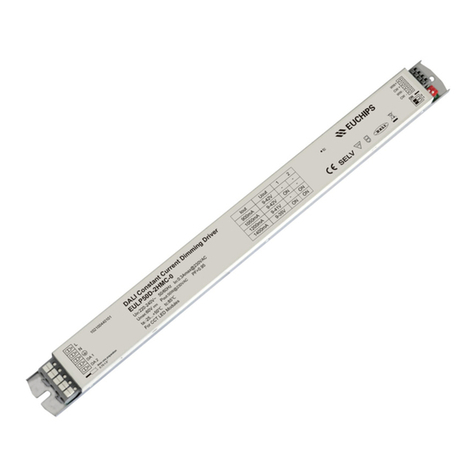
EUCHIPS
EUCHIPS EULP50D-2HMC-0 quick start guide
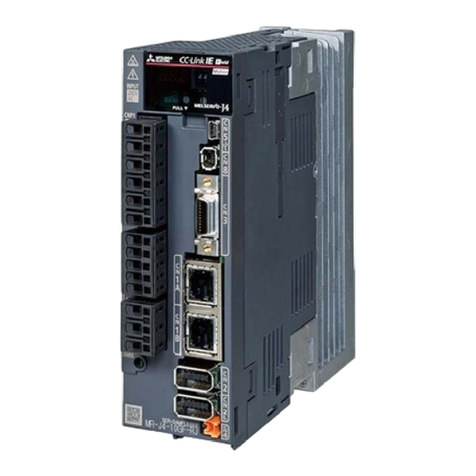
Mitsubishi Electric
Mitsubishi Electric MELSERVO MR-J4-B-LL Series instruction manual

Addonics Technologies
Addonics Technologies AD2N1GPX4 user guide
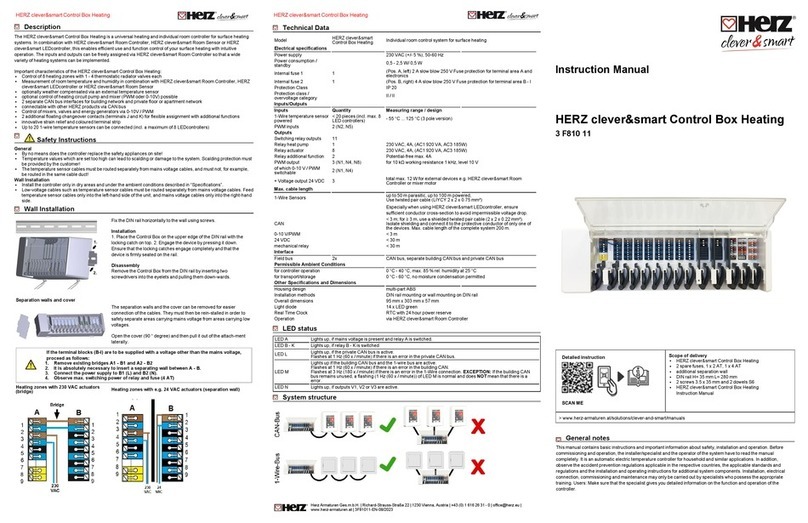
Herz
Herz clever&smart Control Box Heating instruction manual

RMG
RMG GSM1SPAT installation manual
